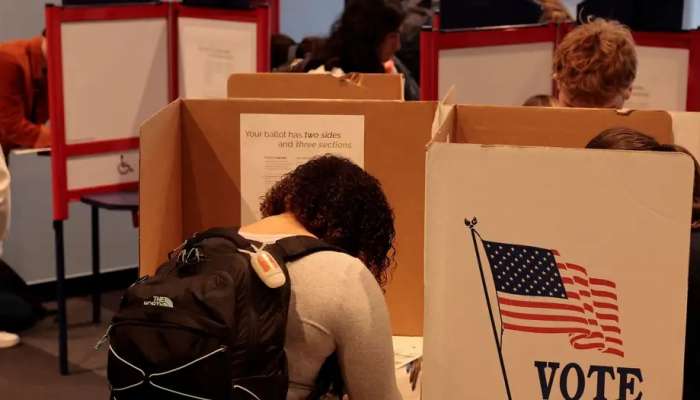
Washington DC: The 2024 US presidential election will take place on November 5, with former President and Republican candidate Donald Trump running against the current vice president and Democratic candiate Kamala Harris. Here's how the election process works.
Who can run for presidential office?
The US Constitution has three basic requirements for presidential candidates: Individuals must be natural-born citizens of the United States and at least 35 years old and have lived in the country for 14 years. There are some exceptions to the 14-year requirement for members of the US armed forces.
What are the requirements for candidates?
"Almost anybody who's an adult citizen can run for president," Wayne Steger, a political science professor at DePaul University in the US state of Illinois, told DW. That includes people who have been accused or convicted of crimes. The US Constitution, in fact, contains a provision that explicitly allows these individuals to run to ensure that political prisoners are not denied the ability to lead, Steger said.
A section of the 14th Amendment of the US Constitution famously prohibits individuals who have "engaged in insurrection or rebellion against the same, or given aid or comfort to the enemies thereof" from holding political office. But Steger said it was very unlikely that the amendment would play a role in the upcoming election.
Though the Supreme Court won't rule on Trump's involvement in the January 6, 2021, attack on the US Capitol before the 2024 election, a majority of justices said in July that the former president had broad protection from criminal prosecution for actions that fell within his official responsibilities. The Supreme Court has delegated the lower District Court in Washington to determine just how that immunity should be applied.
What happens in primaries and caucuses?
These modest eligibility requirements mean that the candidate pool must be whittled down before the November election.
Primaries and caucuses represent the first step of this process by determining political party support for candidates. These take place at the state level during early spring of an election year. Unless a candidate runs as an independent, they will register to run with a political party in the state where they live.
As in regular elections, primaries take place via secret ballot, and the candidate with the most votes wins. Caucuses are more complex. In states that use them, a day is designated for political party members to meet to decide together, through a sort of public vote, which candidate they want to represent them. Hundreds of these meetings occur when a state holds its caucus.
Primaries and caucuses look different depending on the state and the party, but the goal is the same: to determine support for individual candidates and pick a nominee for the general election.
What is the significance of the national conventions?
After all the state-level primaries and caucuses, the political parties hold national conventions to officially choose the candidate to represent them in the November election, along with his or her running mate.
At the conventions, delegates from each of the 50 US states come together to vote on the presidential nominee. A candidate needs a simple majority of delegate votes to win the nomination.
There are different types of delegates. The Democrats call them "pledged" and "unpledged"; the Republicans call them "bound" and "unbound." Pledged/bound delegates must vote for the candidate who won the primary in their state — at least in the first round of voting. Unpledged/unbound candidates are free to vote for a candidate of their personal choosing. At the Democrats' convention, unpledged delegates are only allowed to vote starting in round two.
In July, President Joe Biden withdrew his candidacy for the 2024 election, endorsing his vice president, Kamala Harris. All Democratic delegates who had previously been pledged to Biden were free to vote for whomever they chose at the Democratic National Convention, since the candidate they'd been pledged to via the primary process was no longer running. The overwhelming majority voted for Harris, so she became the presidential nominee.
What happens in the presidential general election?
After national conventions, election season heats up. On Election Day, votes are held nationwide in thousands of cities and towns. Any US citizen registered to vote can take part.
What is the Electoral College?
The US presidential election is not determined by a majority vote but is ultimately decided by the Electoral College, which comprises 538 electors (one elector for every member of US Congress, plus three for the District of Columbia). A simple majority of at least 270 of these electoral votes is needed to win the election.
These votes are allocated based on geography and population, with each US state given one electoral vote per member of its congressional delegation. That means that regardless of population, each state automatically has three electoral votes because all states have two US senators and at least one seat in the House of Representatives.
The number of people who make up a state's congressional delegation depends on its population. California has the most electoral votes, with 54, while Vermont, for example, has the minimum, with three. Except for Maine and Nebraska, which have a variation of the proportional representation system, a candidate will win all of a state's electoral votes if it wins the majority there.